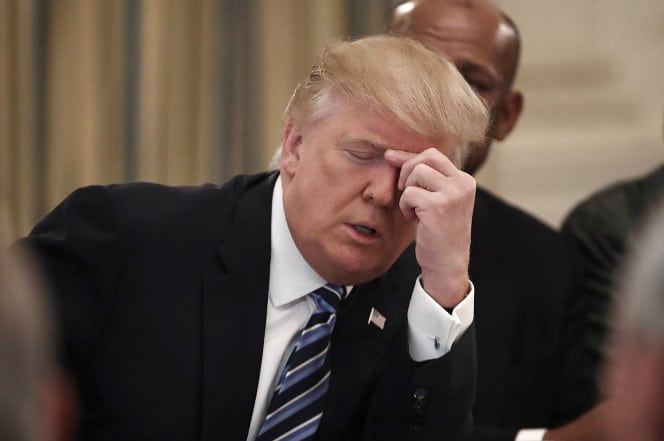Global Markets Challenge Trump’s Tariff Strategy
President Donald Trump’s tariff policies aimed to assert economic dominance, expecting global markets to weaken under pressure. Investors typically shift from stocks to U.S. Treasury bonds during uncertainty, viewing them as secure assets. This time, nations and investors sold Treasuries, sending shockwaves through financial systems worldwide. The sell-off revealed doubts about America’s financial stability, prompting a swift policy adjustment. Trump acknowledged market unease, signaling a retreat from his initial aggressive stance.
Tariffs Spark Market Turmoil
Trump’s tariff announcements targeted global trade, aiming to force compliance from other nations. He anticipated markets would falter, strengthening his negotiating position against foreign economies. Stocks plummeted as investors reacted to the looming trade disruptions. Trump monitored the bond market closely, describing it as “very tricky” yet “beautiful” after initial chaos. Contrary to expectations, the bond market’s response defied traditional patterns, catching policymakers off guard.
Treasury Sell-Off Shakes Foundations
Investors sold U.S. Treasuries en masse, driving yields to levels unseen in months. The 10-year Treasury yield soared to 4.592 percent, marking a peak not reached since February. Deutsche Bank analysts observed that “the market has lost faith in U.S. assets.” Bonds, long considered a safe haven, became liabilities as investors sought alternatives. This shift challenged the assumption that Treasuries remain untouchable in crises.
Nations Respond Strategically
Foreign powers and investors adopted calculated moves, signaling resistance to U.S. economic pressure. Chen Zhao suggested China redirected Treasury proceeds into European assets like German bunds. Japan’s life insurers, holding significant U.S. debt, likely contributed to the sell-off, per Garry Evans. German bonds and gold emerged as preferred safe havens, reflecting distrust in American markets. These actions collectively diminished the perceived invincibility of U.S. financial instruments.
Trump’s Policy Faces Pushback
The Treasury sell-off forced Trump to reconsider his tariff strategy, revealing global markets’ influence. He noted investors “had gotten a little queasy” as bonds faltered, prompting a 90-day tariff pause. Lawrence H. Summers warned that global markets treated America “like a problematic emerging market.” The rapid policy shift showed the limits of unilateral economic actions. Markets demonstrated their ability to counterbalance aggressive trade tactics effectively.
Shifting Global Financial Dynamics
The sell-off exposed vulnerabilities in America’s role as a financial cornerstone, prompting long-term questions. Grace Tam highlighted concerns that nations like China might “dump” Treasuries as retaliation. Foreign investors, including Japan, reevaluated their reliance on U.S. debt, seeking diversified holdings. Jens Nordvig remarked that “U.S. exceptionalism went out of the window a long time ago.” Tariff disruptions may accelerate a reconfiguration of global economic alignments.
Future of Trade and Power
Global reactions to Trump’s tariffs reshaped perceptions of economic authority, challenging America’s dominance subtly. The Treasury sell-off marked a turning point, with nations asserting financial autonomy. Investors’ pivot to alternative assets signaled a broader shift in trust. Steven Kamin noted actions that “seem well calibrated to overturn the supremacy of the dollar.” While the tariff pause offers temporary relief, underlying tensions promise continued economic realignment.

